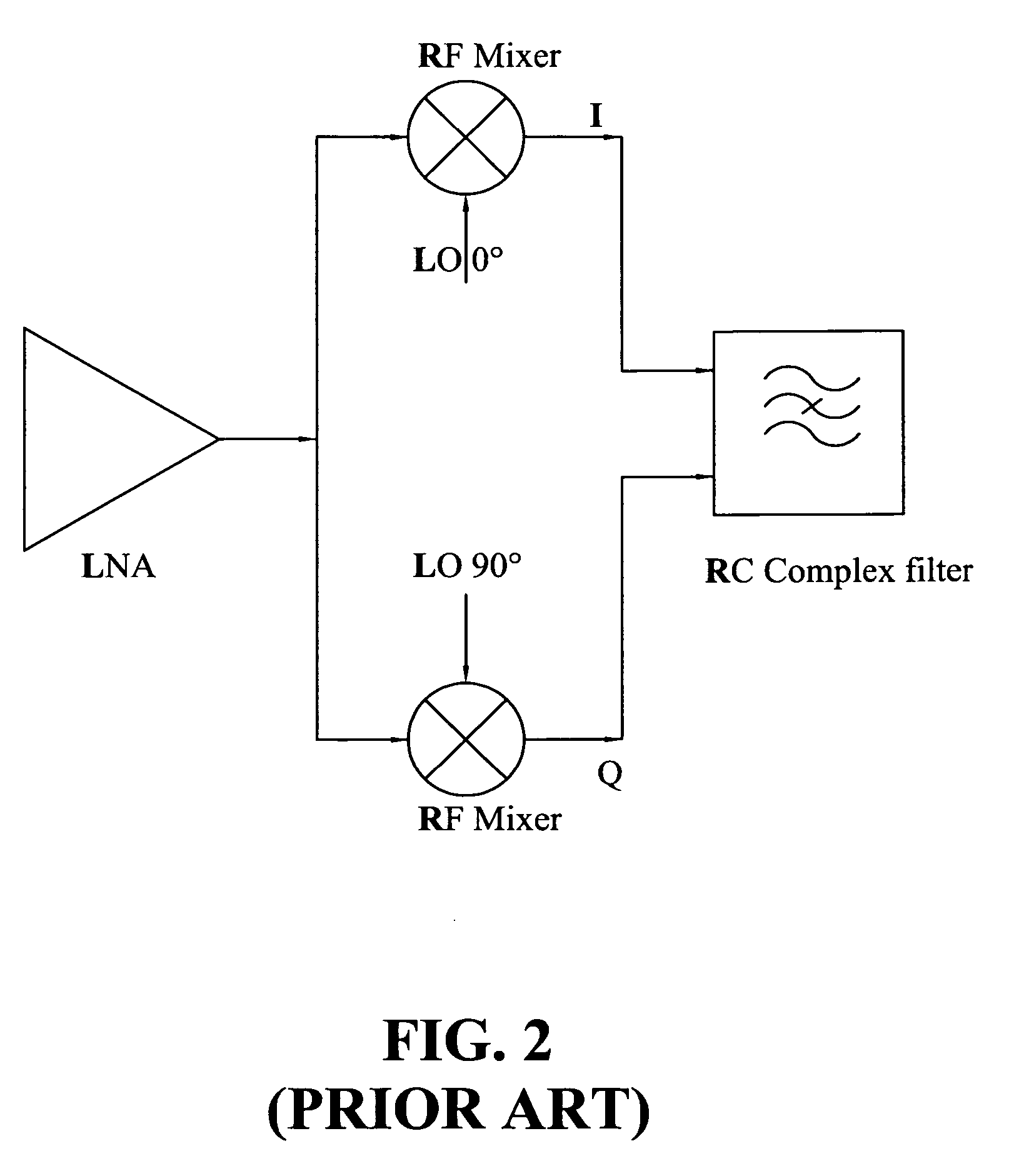Radio frequency mixer with notch filter
a radio frequency mixer and notch filter technology, applied in amplifiers, electrical devices, semiconductor devices/discharge tubes, etc., can solve the problems of intrinsic high frequency loss and design difficulty, limiting the lna to differential topology for integration, and generating image frequency signals
- Summary
- Abstract
- Description
- Claims
- Application Information
AI Technical Summary
Benefits of technology
Problems solved by technology
Method used
Image
Examples
Embodiment Construction
[0014]FIG. 3 shows a block diagram of an embodiment of an RF mixer of the present invention, including a single-to-differential (S-to-D) converter 301, an image rejection notch filter 302, and four Gilbert cell switches 305, 306, 307, and 308. Gilbert cell switches 305, 306, 307, and 308 act as a circuit of a conventional mixer. In this embodiment, image rejection notch filter 302 is placed between the differential output of S-to-D converter 301 and the Gilbert cell switches. A power supply VDD is used to drive the sources of the Gilbert cell switches and a local oscillator (LO) is connected to the gates of the Gilbert cell switches.
[0015] The RF input from a single-ended LNA first goes to S-to-D converter 301 for converting to a differential signal. It is worth noticing that both the desired frequency signal and the image frequency signal are amplified and converted into the differential signal up to this stage. The image frequency signal in the differential signal is then absorbe...
PUM
 Login to View More
Login to View More Abstract
Description
Claims
Application Information
 Login to View More
Login to View More - R&D
- Intellectual Property
- Life Sciences
- Materials
- Tech Scout
- Unparalleled Data Quality
- Higher Quality Content
- 60% Fewer Hallucinations
Browse by: Latest US Patents, China's latest patents, Technical Efficacy Thesaurus, Application Domain, Technology Topic, Popular Technical Reports.
© 2025 PatSnap. All rights reserved.Legal|Privacy policy|Modern Slavery Act Transparency Statement|Sitemap|About US| Contact US: help@patsnap.com



